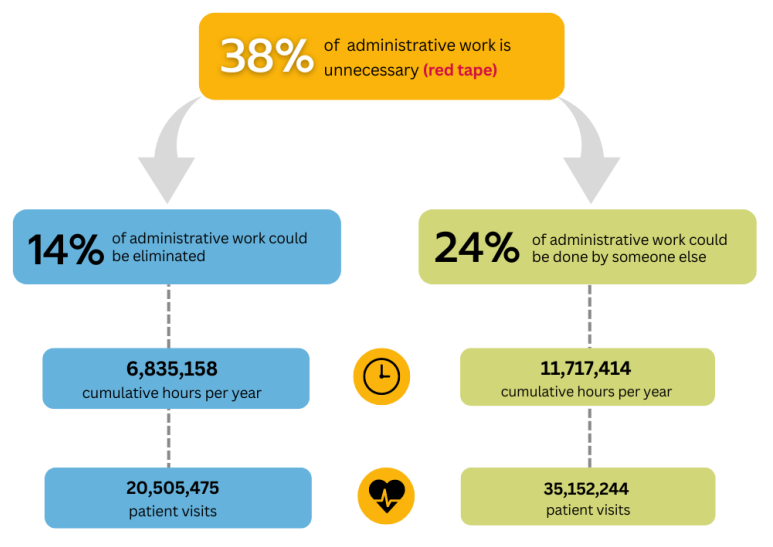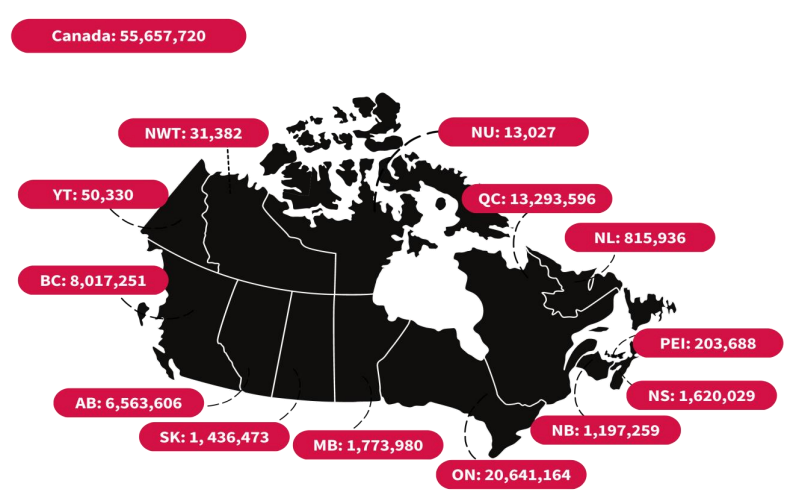Doctors Spend Millions of Hours on Unessential Paperwork, Report Says
Canadian doctors are spending 18.5 million hours on unnecessary administrative tasks each year. This is the equivalent of 55.6 million patient visits annually, according to a report by the Canadian Federation of Independent Business (CFIB) released today.
Laura Jones, CFIB executive vice-president and co-author of the report said, "whether we are talking about healthcare availability or housing affordability, red tape reduction should be part of the solution. This is common sense that is too often overlooked."
The report found 89% of Canadians and 87% of business owners agree that governments should focus on reducing physician paperwork to free up time for more patient visits.
The report, titled Patients before Paperwork, builds on the findings from a 2020 study from Nova Scotia’s Office of Regulatory Affairs and Service Effectiveness using Nova Scotia’s data as a benchmark across the nation.
Unnecessary tasks include work that could be completely eliminated, as well as work that does not require a physician’s clinical expertise.
Examples are length forms and processes and filling out complicated paperwork for insurance companies.
"Not only does red tape limit a physician's ability to see their existing patients and take on new ones, it is also a significant cause of physician burnout, which is at an all-time high,” said Dr. Candace Bradshaw, President of Doctors Manitoba.
Unnecessary administrative work and equivalent patient visits, Canada. (Source: CFIB).
In September 2022, an Angus Reid poll indicated that half of Canadians are either unable to see their family doctor within a week, or they can't find a doctor at all.
The report indicates that simply reducing physician red tape by 10% could save 1.9 million hours of physician time and the equivalent of 5.5 million patient visits across Canada.
The total administrative burden can also be expressed as the equivalent number of new physicians. If the total red tape burden were to be eliminated, this would be similar to adding 7,052 doctors to Canada’s health care system, or a 7.5% increase.
Concerning British Columbia, elimination of red tape would provide an additional 8 million patient visits to our health care system.
Total patient visits that could be scheduled if governments eliminated physician red tape (number of visits, by province/territory). (Source: CFIB).
The report shows that even a small reduction in red tape burden can have a substantial impact on physician availability for British Columbians.
Recommendations are provided, including setting reduction targets, identification of top irritants to resolve and even the possibility of assigning administration work to a separate entity with dedicated resources, such as the Office of Regulatory Affairs and Service Effectiveness in Nova Scotia which has seen past success.




